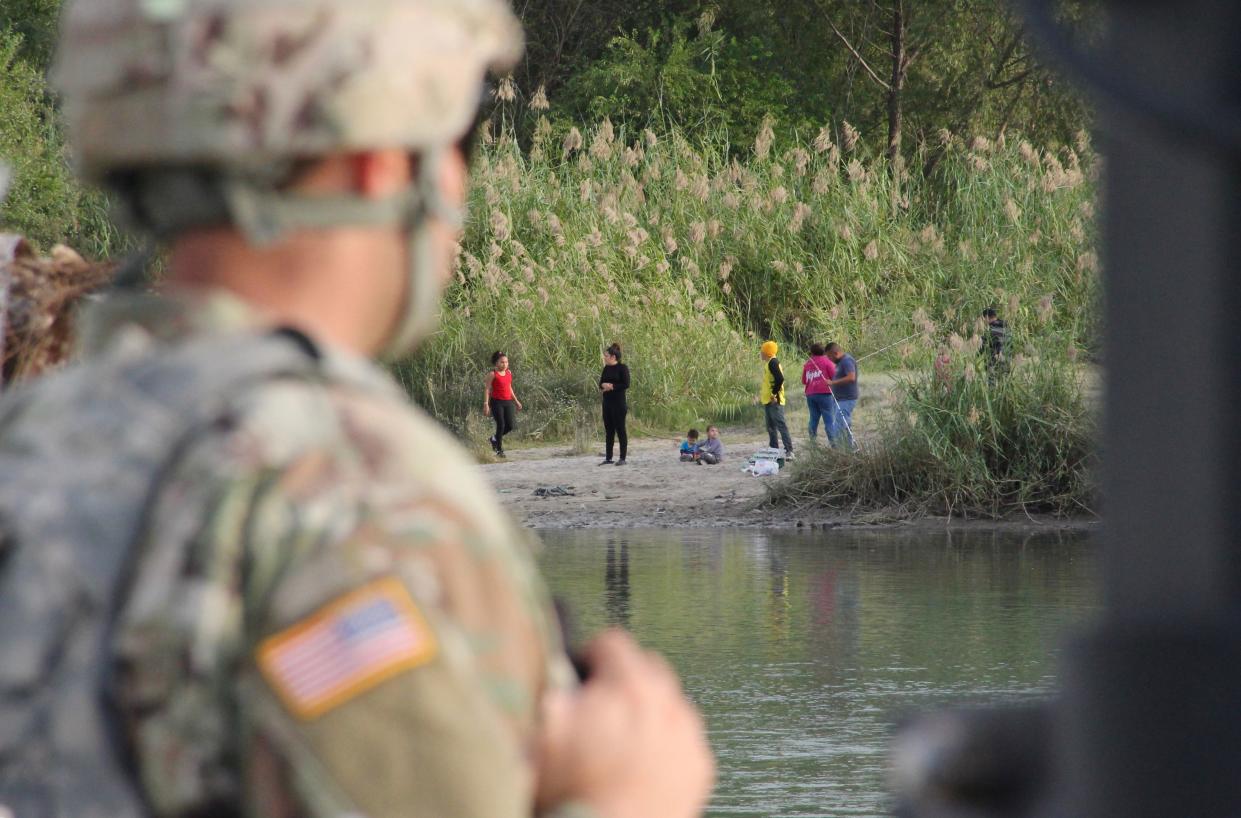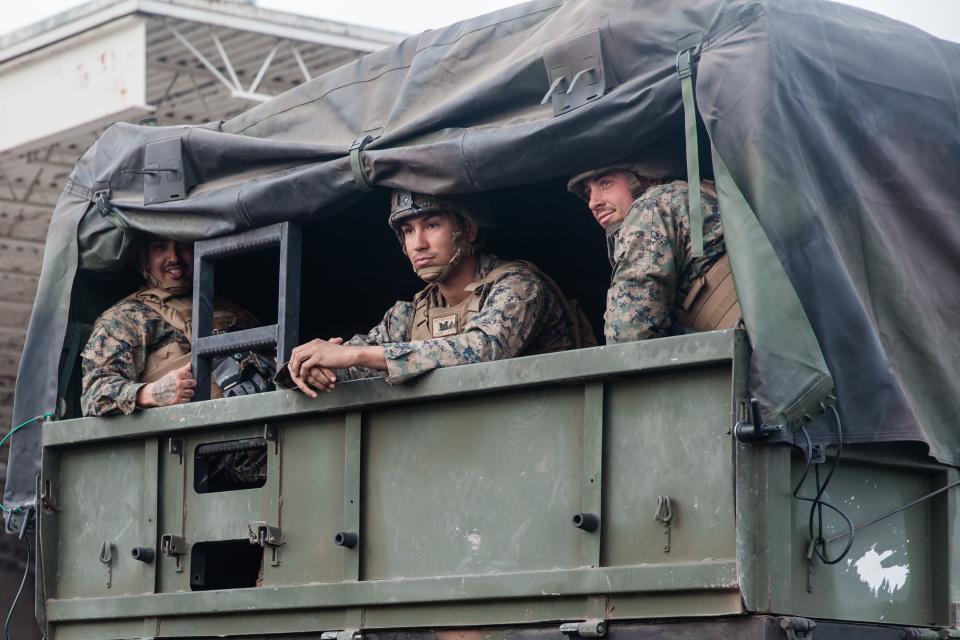White House authorizes 'lethal force' by troops at border. What does it mean?

Immigration activists, federal officials and reporters wrestled Wednesday with interpretations of a White House memo authorizing “a show or use of force (including lethal force, where necessary)” by the troops deployed on the border with Mexico.
The directive specified the purposes for which force could be used as “crowd control, temporary detention and cursory search.” Speaking to reporters Wednesday, Secretary of Defense James Mattis downplayed the likelihood of a serious clash, saying he envisioned the use of troops for “minutes” as a first response to an emergent threat. Enforcement will continue to be the responsibility of customs and Border Patrol officers.
The directive, which was first reported by the Military Times, immediately raised concerns about the role of approximately 5,900 U.S. troops that were rushed to the southwest border last month to confront groups of mostly Central American migrants traveling in caravans through Mexico toward the United States.
In what was viewed by many as a political ploy ahead of the midterm elections, President Trump ordered the troops to the border as a show of force against the migrant caravans, which at that point were still several weeks away from the U.S. Trump described the refugees as an “invasion” and an imminent national security threat.
“The fear-mongering tactic of sending soldiers to the border for a danger that doesn’t exist is now being extended to stoking tensions with threats of lethal force,” said Jonathan Ryan, executive director of the Texas-based nonprofit Refugee and Immigrant Center for Education and Legal Services, or RAICES. “This is costing taxpayers hundreds of millions of dollars, and for what? To rally a base based on racist and xenophobic lies? And to deny people their legal right to asylum?”
Hina Shamsi, director of the ACLU’s National Security Project, called the latest memo “an unnecessary escalation of a political stunt that risks harm to civilians and legal jeopardy for the military.”
“In addition to serious concerns about violation of the Posse Comitatus Act, it’s hard to see how John Kelly, a civilian White House official, has the authority to issue any such order,” she said, referring to initial reports that the directive issued to Mattis had been sent not by President Trump but by White House chief of staff John Kelly. On Wednesday afternoon, however, Newsweek reported that the order issued by Kelly was preceded by a “decision memorandum” signed by the president.

Nonetheless, concerns remain about potential violations of the Posse Comitatus Act, the 1878 federal law prohibiting active-duty military forces from engaging in civilian law enforcement within the United States.
A Department of Homeland Security spokesperson declined to comment on how the new authorities outlined in the memo would impact current operations at the border, where troops have largely been playing a supportive role, laying concertina wire and helping install additional barricades and fencing near ports of entry. A spokesperson for the Department of Defense could not be reached for comment.
Mark Cancian, a retired Marine colonel and senior adviser at the Center for Strategic and International Studies, a bipartisan Washington think tank, pointed out that the memo authorizes the troops to engage in such activities at the direction of the secretary of defense.
“The important thing is to watch and see whether any of these authorities are actually given to the troops,” Cancian said, adding that Mattis has “not done that, and I doubt if he will.”
Cancian also observed that the language of the memo seemed designed to recognize the limitations imposed by the Posse Comitatus Act, specifically a line that states U.S. troops “shall not, without further direction from the President, conduct traditional civilian law enforcement activities, such as arrest, search, and seizure.”
“You can feel the nervousness in this memo,” said Cancian, speculating that the caution might reflect White House concerns about the possibility of a confrontation, in light of reports that the migrants, many living in tents or on the streets while waiting to be processed by U.S. immigration officials, have clashed with residents in and around Tijuana.

Cancian acknowledged, however, that there’s not a very clear distinction between the traditional law enforcement duties forbidden under the Posse Comitatus Act and the kinds of tasks authorized in the memo, including detention and crowd control.
“The problem for the troops is you’re going to have people at very low levels trying to parse these new rules in real time, which is going to be hard for them,” said Cancian. Soldiers aren’t trained in the legal rights of civilians or in limiting the use of deadly force. If these authorities are implemented, he predicted, there will likely be “some instances that people regard as abusive because the line isn’t clear.”
Cancian said that while the memo may set off alarm bells for some, he is comforted by what he views as Mattis’s minimalist interpretation. While speaking to reporters Wednesday, Mattis said of the limited detention authority granted in the memo, “I would put it in terms of minutes. In other words, if someone’s beating on a border patrolman and if we were in a position to have to do something about it, we could stop them from beating on them and take them over and deliver them to a border patrolman who would then arrest them for it.”
“In their minds, this is for a worst-case scenario,” said Cancian, describing a hypothetical situation of migrants breaking through a section of border fence and rushing across en masse, overpowering Border Patrol agents.
“Short of that, I can’t imagine any reason to do this,” he said, adding that there is “no evidence that any of these people are armed.”
“If they dribble across the border, that’s what Border Patrol is for,” he said. “They can handle that.”
Read more from Yahoo News:


